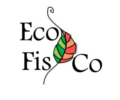Summary
Photosynthetic pigment composition has been a major study target in plant ecophysiology during the last three decades. Although more than 2000 papers have been published, a comprehensive evaluation of the responses of photosynthetic pigment composition to environmental conditions is not yet available.
After an extensive survey, we compiled data from 525 papers including 809 species (subkingdom Viridiplantae) in which pigment composition was described. A meta-analysis was then conducted to assess the ranges of photosynthetic pigment content.
Calculated frequency distributions of pigments were compared with those expected from the theoretical pigment composition. Responses to environmental factors were also analysed. The results revealed that lutein and xanthophyll cycle pigments (VAZ) were highly responsive to the environment, emphasizing the high phenotypic plasticity of VAZ, whereas neoxanthin was very stable.
The present meta-analysis supports the existence of relatively narrow limits for pigment ratios and also supports the presence of a pool of free ‘unbound' VAZ. Results from this study provide highly reliable ranges of photosynthetic pigment contents as a framework for future research on plant pigments.

